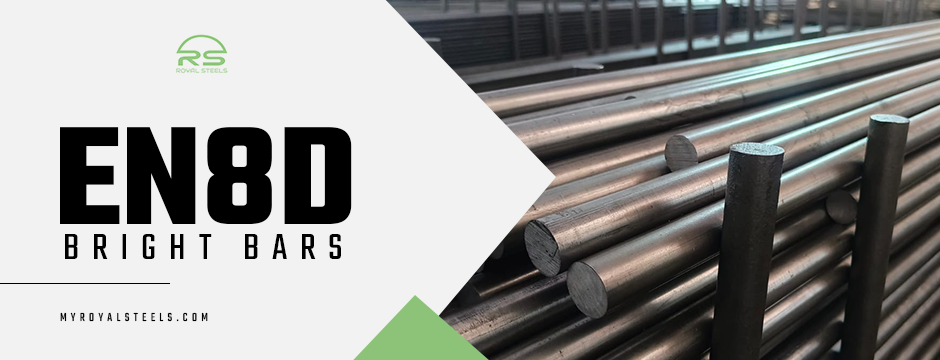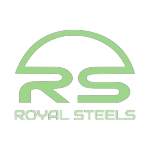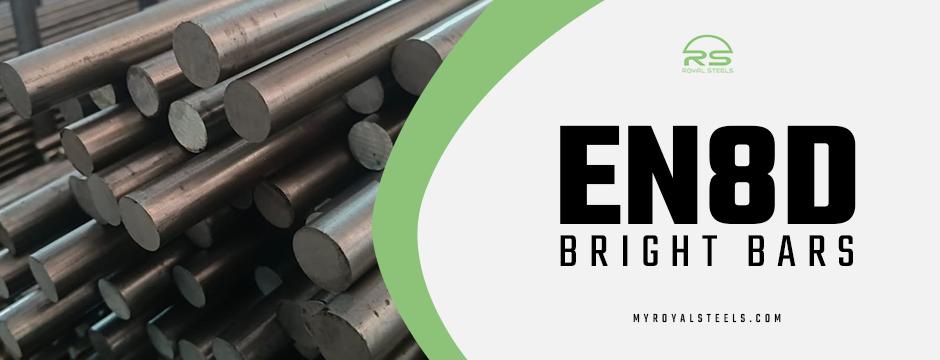Material selection is paramount in construction for high-stress engineering components. Selecting a metal could improve or enhance durability, guarantee mechanical integrity, and ultimately reduce the risk of fatigue, failure, or defect. EN8D bright bars have blossomed in popularity in many applications and industries, particularly in automotive, construction, heavy machinery and precision tools. These bright bars address many engineering concerns, as they are well known for their mechanical properties and tensile strength, making them reliable and performance-driven when under pressure.
EN8D bars are medium carbon with the added benefit of manganese, enabling hardenability. Bright bars possess high strength, good machinability, and good wear and tear. Components that often utilise EN8D bars include shafts, gears, axles, studs and crankshafts. When reliability is crucial, it will be manufactured from EN8D bars. It also possesses a bright surface finish, allowing for tight tolerances and good machinability. This blog explores what makes bright bars so well-suited for high-stress applications, analysing their composition, mechanical properties, performance benefits, and the industries that benefit the most.
Analysing EN8D Bright Bars: Composition and Attributes
EN8D is a medium carbon steel with a unique chemical composition relative to EN8, notably a much higher level of manganese. A typical chemical composition for EN8D consists of:
- Carbon (C): 0.35% to 0.45%
- Manganese (Mn): 0.70% to 1.00%
- Silicon (Si): up to 0.05%
- Sulphur (S) and Phosphorus (P): small amount to high ductility and fatigue
The bright bar version of EN8D is cold drawn, which means it will have an improved surface finish over EN8, tighter tolerances and improved mechanical strength through strain hardening whilst being cold drawn.
Mechanical Properties of Bright Bars
One of the key features of EN8D bars that makes them very trustworthy in high-stress applications is the above mechanical properties of the combination of mechanical strength and toughness.
- Tensile Strength: 600 to 850 MPa (megapascals)
- Yield Strength: 400 MPa
- Hardness (Brinell): 180 to 220 HB
- Elongation: 12% minimum
This set of mechanical properties means EN8D will provide structural reliability for your applications where they can be subject to high loads, cyclical stresses, and impacts.
Why EN8D Bars Excel in High-Stress Applications?
Superior Hardness and Strength
The higher carbon and manganese content provide EN8D bright bars with outstanding tensile and yield strength. These properties are crucial in environments where the component must withstand extreme loads or bending forces without deformation or cracking.
Excellent Wear Resistance
High-stress engineering components are often exposed to friction and surface abrasion. EN8D’s wear resistance helps prolong the life of parts such as gears, crankshafts, and machine spindles by minimising degradation over time.
Good Machinability
Despite its strength, EN8D bars are relatively easy to machine, especially when compared to other alloy steels. The bright finish further improves tool life and dimensional precision, which is crucial for tight-fitting mechanical assemblies.
Better Fatigue Resistance
Fatigue is a primary mode of failure in components due to the heavy workloads. EN8D’s consistent grain structure and specified carbon levels will improve fatigue life in components subject to many cycles.
Better Dimensional Accuracy
The cold finish bright bar form ensures better tolerances and improved surface finish. In the precision industries, such as automotive and aerospace, minimal tolerances ensure that dimensions and tolerances work as they should.
Common Uses for Bright Bars

Due to their mechanical performance and consistency of quality, EN8D bars are approved for use across many industries and applications:
- Automotive: Designed for crankshafts, axles, connecting rods and gears, which will be subjected to a considerable amount of torque and stress.
- Heavy Equipment: Designed for shafts, spindles and machine components that face continuous load.
- Agricultural Equipment: Flange bolts and drive shafts to deliver power to rotating parts in outdoor conditions.
- Building & Construction Equipment: Pins, bolts, and fasteners on cranes and heavy hand tools.
- Oil and Gas: Drill collars and other downhole well components that are subject to high pressure and excessive torque.
- Rail and Marine: For example, couplings and axles are subjected to long-term stress and vibration.
Heat Treatment for EN8D Bars
Bright bars can be subjected to various heat treatments to further enhance their performance:
- Hardening and Tempering: Increases hardness while retaining enough ductility.
- Normalising: Improves machinability and refines grain structure.
- Annealing: Softens the material for improved machinability and stress relief.
Heat treatment customisations make EN8D highly versatile and allow tailoring of the properties for specific use cases.
Advantages Over Other Carbon Steels
Compared to other medium carbon steels like EN8 or mild steels:
- Higher manganese content in EN8D enhances hardenability and strength.
- Better surface finish due to the cold drawing process.
- Greater fatigue resistance which is crucial for rotating or reciprocating components.
- Less distortion during machining and heat treatment processes.
These benefits contribute to greater lifecycle performance and reduced maintenance costs.
Bottom Line
In high-stress engineering applications, there’s no room for compromise. EN8D bright bars offer a rare combination of strength, machinability, and fatigue resistance that makes them a top choice for critical components across automotive, machinery, and construction sectors. Their mechanical performance, especially under stress and load, ensures safety, reliability, and long-term efficiency.For organisations seeking a dependable supply of premium-quality EN8D bars, Royal Steels stands out as a trusted name in the industry. With a strong commitment to quality, precision manufacturing, and customer satisfaction, we deliver bright bars that meet the highest engineering standards. Explore our offerings today to give your components the robust foundation they deserve.
Frequently Asked Questions
EN8D bright bars are primarily used in high-stress engineering applications like automotive axles, crankshafts, gears, spindles, and heavy machinery components due to their strength and durability.
EN8D has higher manganese content than EN8, which enhances its hardenability, tensile strength, and fatigue resistance—making it more suitable for components under continuous or cyclic load.
Yes, EN8D bars respond well to various heat treatments such as hardening, tempering, normalising, and annealing to improve specific mechanical properties.
Absolutely. Their bright finish and uniform dimensions make EN8D bars ideal for precision machining, ensuring accuracy and improved surface quality.
You can purchase premium-grade EN8D bars from trusted suppliers like Royal Steels, known for quality control, customisation options, and prompt delivery.

